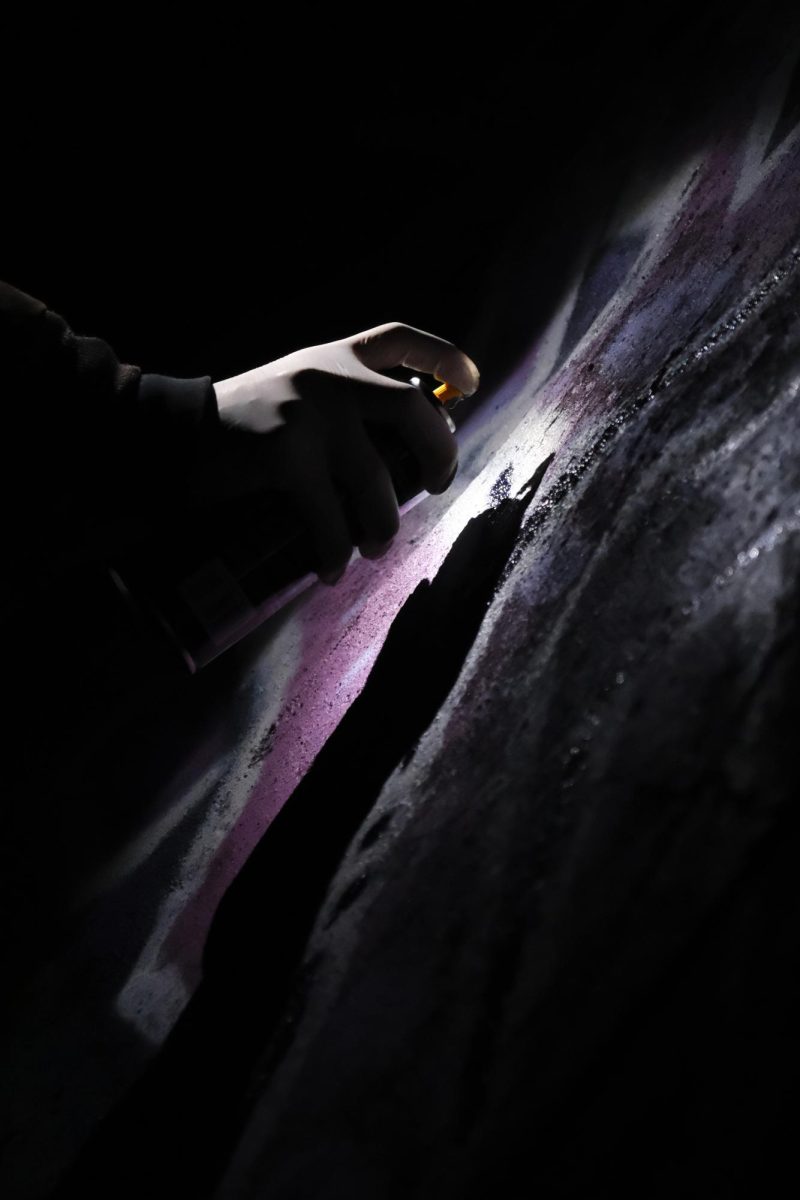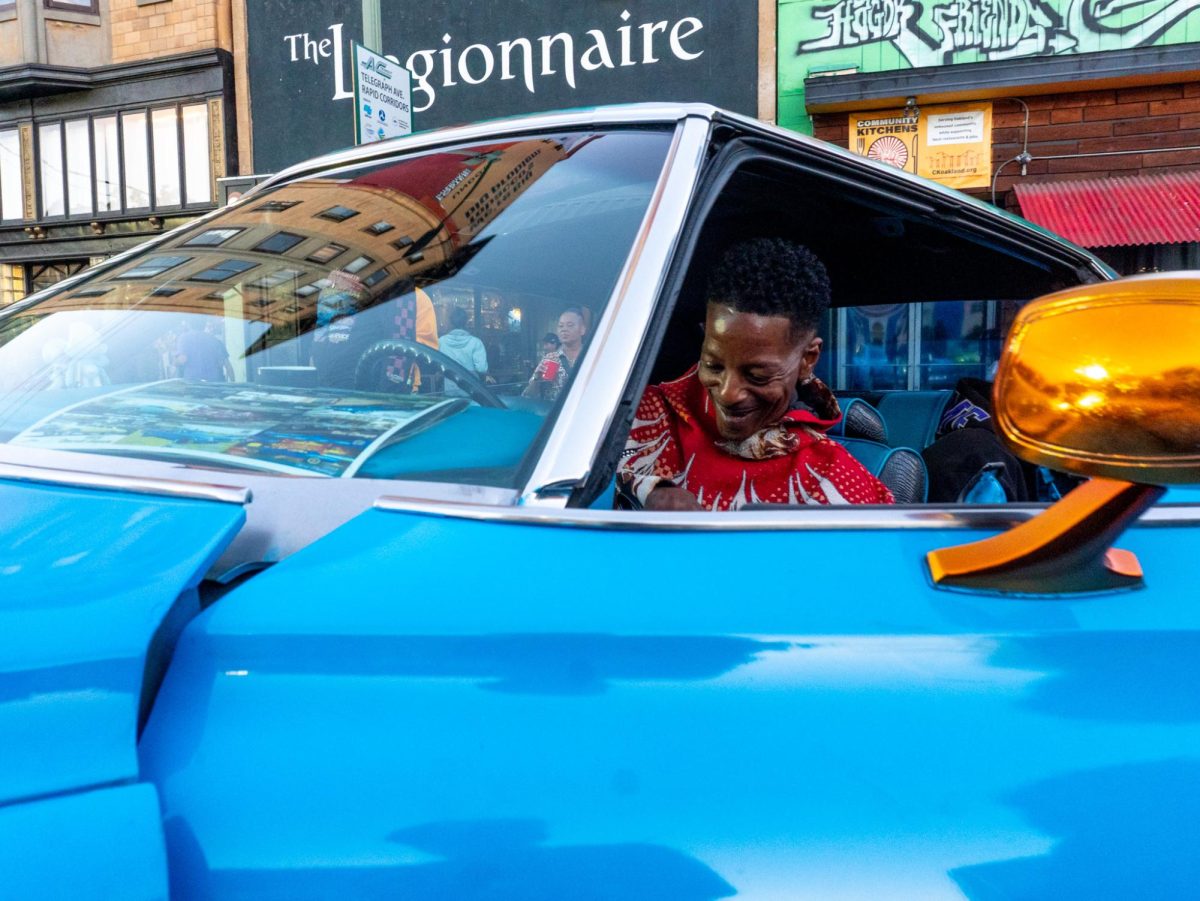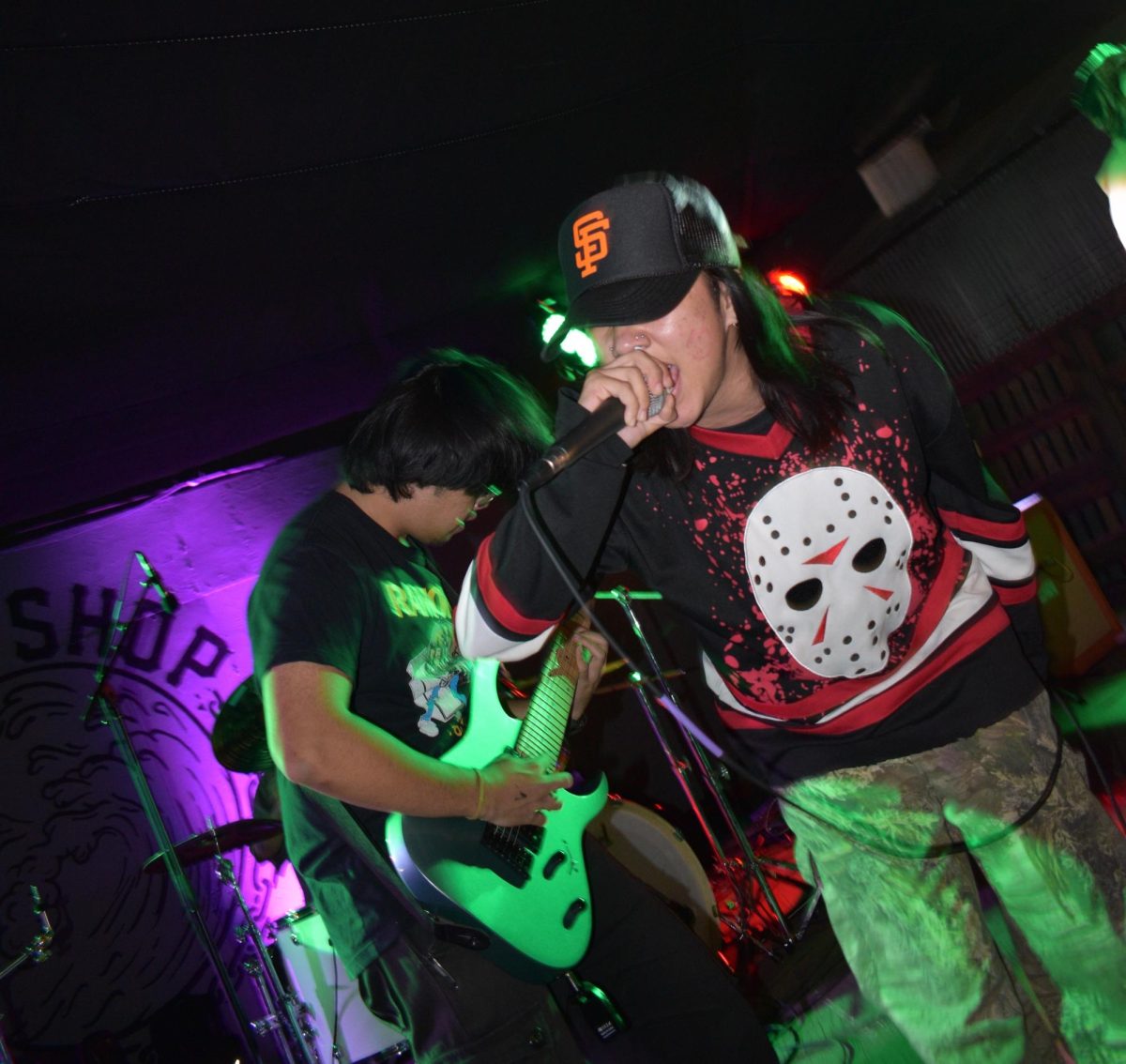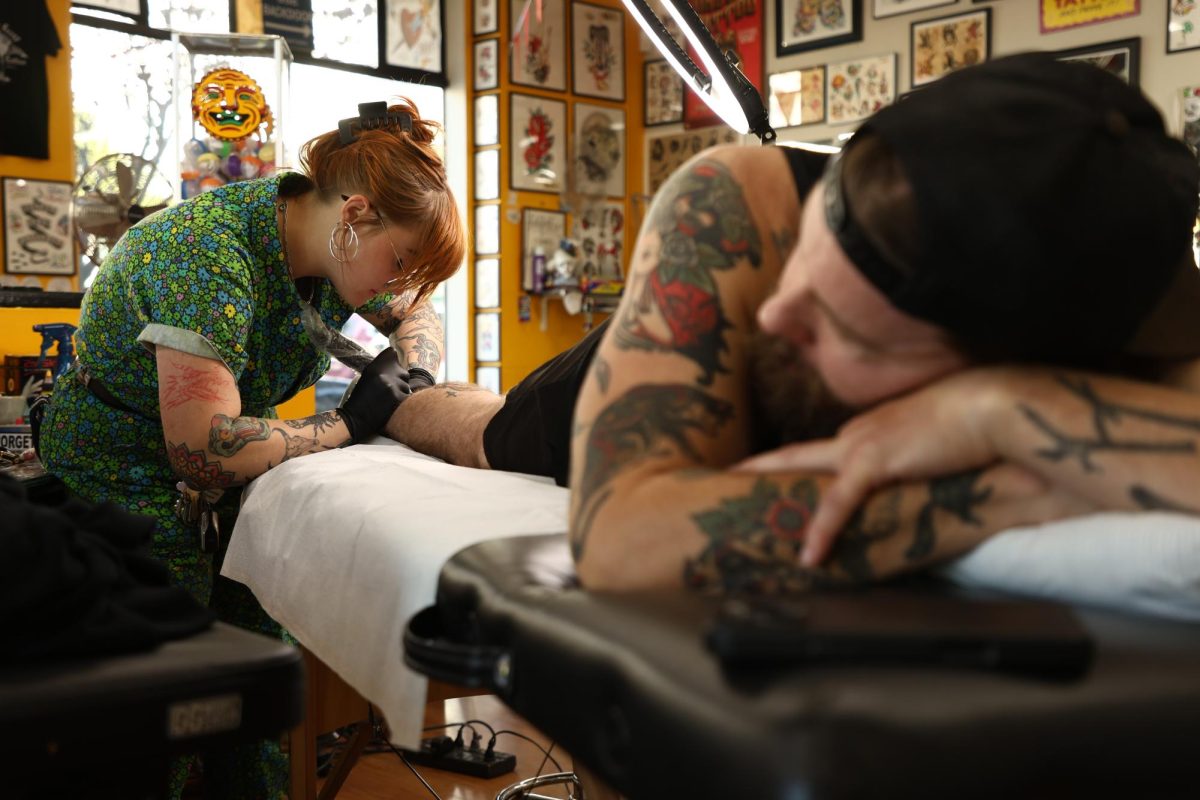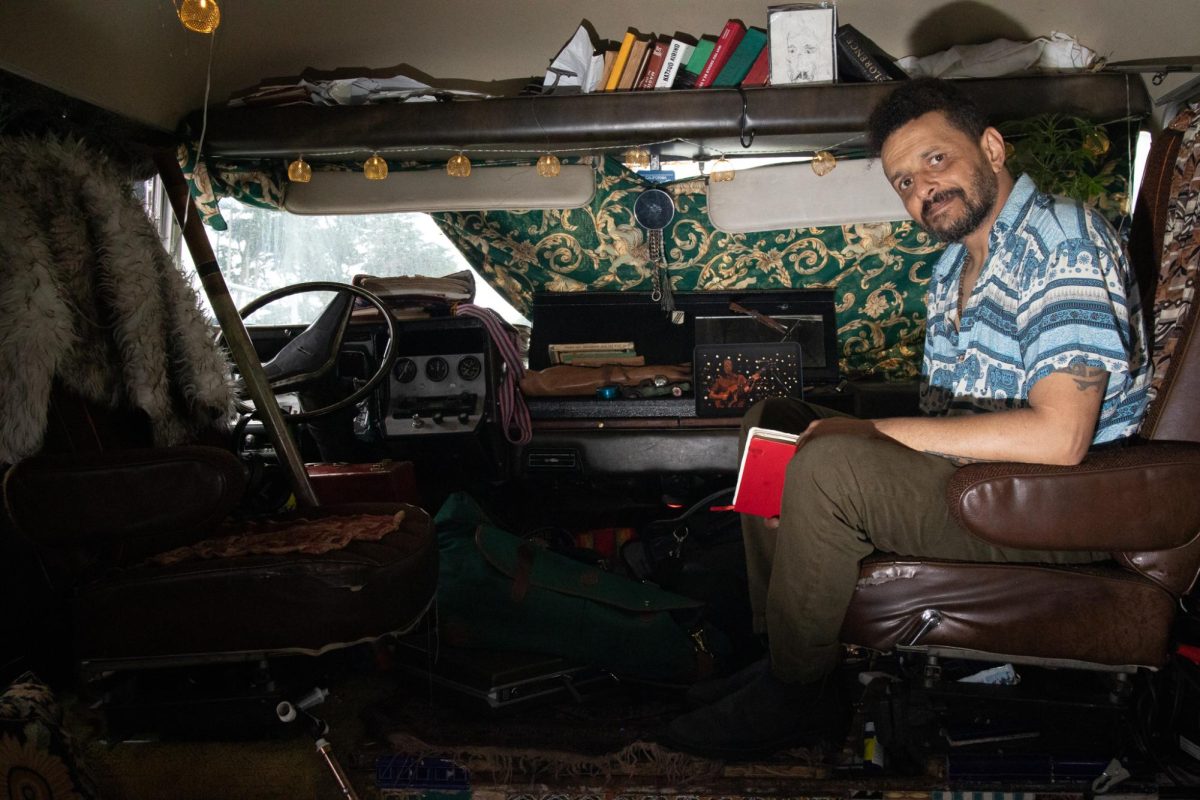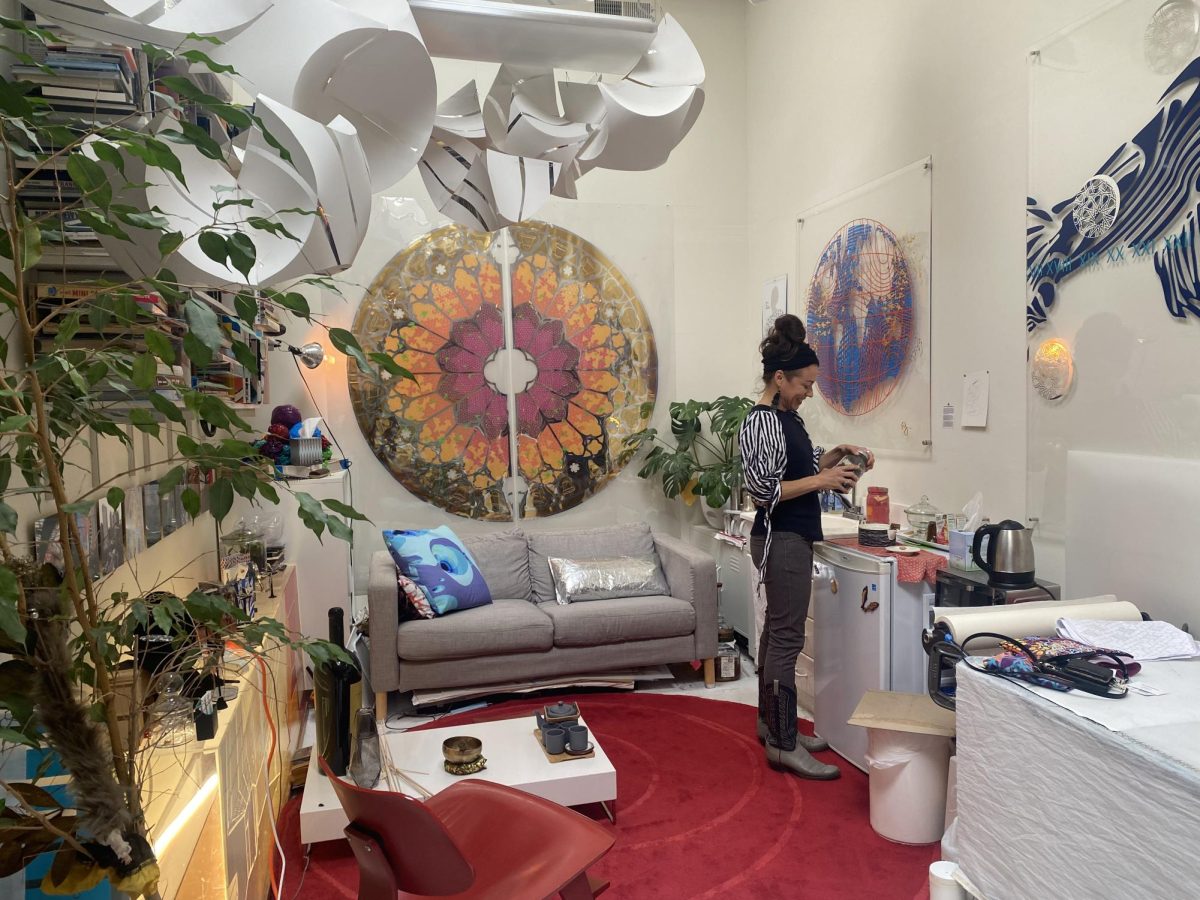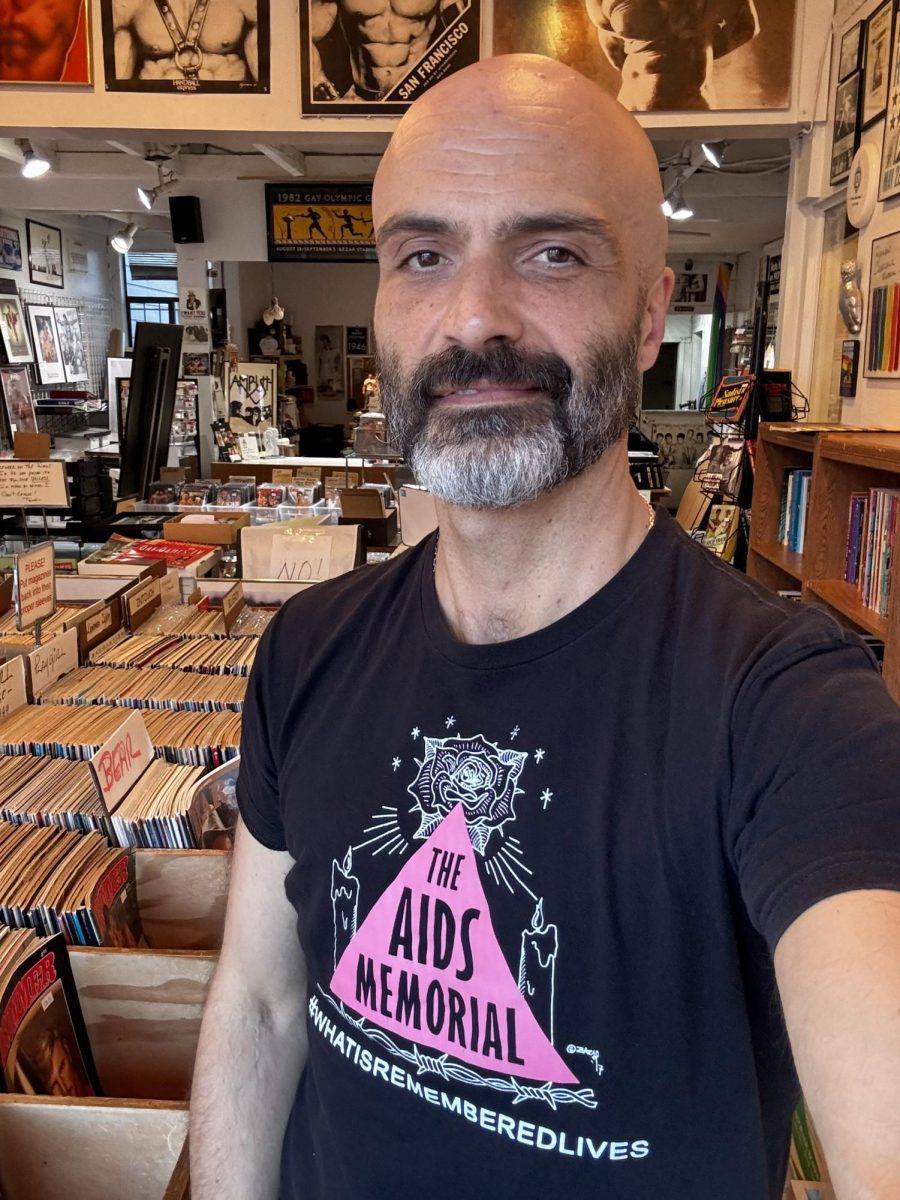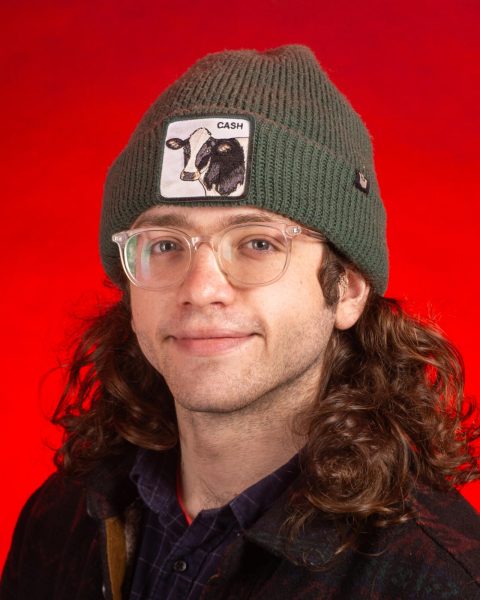Throughout the streets of San Francisco, a myriad of vibrant artworks wind down alleyways and decorate the sides of buildings. A colorful tapestry of graffiti and murals blanket the mundane, industrial landscape. With each piece, the cityscape transforms into an exhibit of self-expression that emphasizes the culture of San Francisco.
To distinguish between the different types of artists as well as the do’s and don’ts within the community, there is a plethora of street art terminology and rules to be educated on. When doing a large-scale commissioned piece, an artist would be referred to as a muralist; when doing graffiti art, an artist would be referred to as a writer. To combat incrimination, writers never use their legal government names. Instead, they sign their pieces with an alias known as a tag.
Contemporary graffiti is delineated by a plethora of controversial aspects and subcategories. The sociocultural system embodies different styles and aesthetics, as well as morals and debates of vandalism. The removal of artworks, as well as efforts to limit the public act of graffiti writing, has become problematic for both artists and authorities alike.
While certain individuals, authorities and many criminologists discern the art form as a sort of visual pollution, graffiti writing has a complex, multifaceted spectrum that extends beyond its negative reputation. Although vilified and criminalized, graffiti is a harmless form of rebellion with diverse cultural narratives, and provides a platform for underrepresented voices.
“[In] Bolivia, where I’m from, women started the graffiti movement […] to promote respecting women,” said Pablo “Raiz” Arroyo, a writer and muralist in San Francisco’s Mission district. “Then you go to Colombia and it was more of a revolution of people that studied typography and signwriters. Then you come to the States and you have it wrapped up in the hip-hop movement.”
Arroyo emphasized that the influence of social media has somewhat devolved contemporary graffiti culture.
“Everyone [is] trying to make a name for themselves, so you’ll have people that just do a two-second hand style all over the city and just see their name all over the place,” said Arroyo. “They don’t really give a shit about the quality of their style or anything like that. It’s just like ‘Oh, but look where I did it, isn’t that crazy?’”
In the mid-to-late 90s, graffiti magazines, or “Zines,” started being issued. Places like Tower Records would distribute publications that would provide their audience with a platform to see and read about a variety of different people’s artwork.
There is a general hierarchy within graffiti culture. Many writers have made a respected name for themselves and are more recognized within the community than others. It is emphatically frowned upon to paint over a more experienced writer’s work, as well as tributes to dead writers.There is also a hierarchy within the differing artistic styles and aesthetics.
The more dedicated, intricate works that utilize more color and style are called “pieces,” while the less detailed bubble-letter style is referred to as “throw-up.” At the bottom of the food chain sits the style most commonly seen around town on public transportation or in bathroom stalls, and is interchangeably known as “hand style” or “bus flow.”
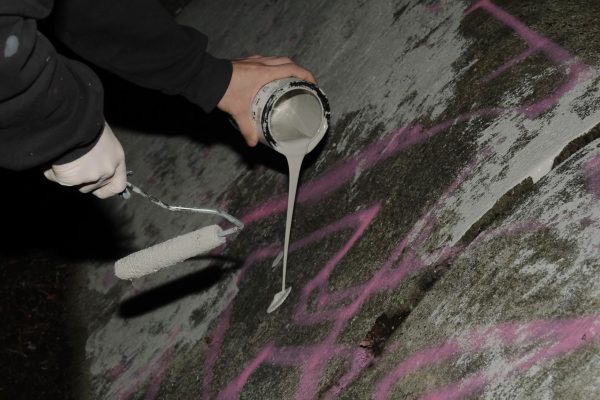
A 21-year-old graphic design major at San Francisco’s California College of the Arts explained the etiquette for painting over another writer’s work. For legal reasons, they will be referred to as their tag “SYCR.”
“[Bus flow] can only be covered by a throw-up or it’s considered disrespectful; throw-up can only be covered by a piece [or] it’s considered disrespectful,” said SYCR. “People will start beef like that just because they think the other person is wack or whatnot.”
SYCR has been graffiti writing for a little over seven years now and credits the older men in their life for their artistic path. Their natural sense of creativity and love for art also helped combat some boredom intolerance they would experience when they were younger.
“It definitely [started as] an unmedicated ADHD-kid type of thing where I accidentally wrote on a few bus stops when I was bored,” said SYCR. “[It] ended up with me filling up notebooks and trying to figure out what I wanted to put up on walls and whatnot.”
Another Bay Area graffiti artist and muralist also started their artistic journey around the age of 14 and connects it to some tendencies of their OCD. Due to legalities and for anonymity, they will be referred to by their tag “Satyr.”
Satyr has been writing for about 33 years and was introduced to the culture through skateboarding. They started observing and experimenting with graffiti tagging in the early 90s when they were in high school. During that time, another more experienced painter recognized Satyr’s potential and decided to take them under his wing for mentoring.
“He basically asked me to send some of my best sketches to him, just to show him what I can do, and he sent it back corrected in red pen like a teacher,” said Satyr. “I got a full-blown college education through graffiti with this guy.”
Throughout the history of the graffiti movement, mentorship has held significant importance to writing and the culture. Knowledge and wisdom transcend generations, strengthening the culture and ever-evolving artwork.
“Graffiti culture is complicated; you have all these factions of what graffiti culture is,” said Arroyo.“You got old heads that really know the history of graffiti and what it really means to different communities.”
Navigating the ropes of graffiti writing is vital to the community and reputation. The line between art and crime gets crossed when writing is done recklessly or selfishly without any genuine intent.
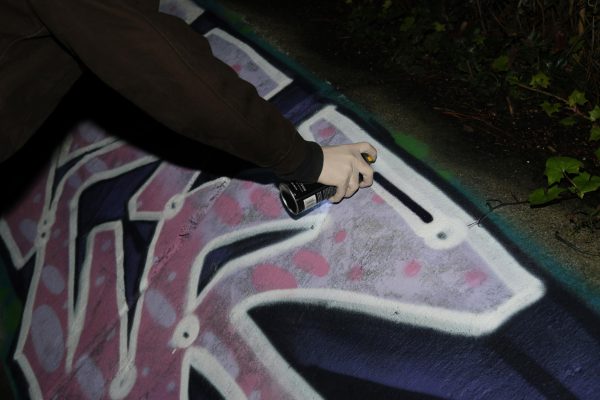
“There [are] rules, but people perceive them differently,” said Ryan Cooper, a third-year studio art major at SF State.“There’s respect to it, there’s levels to it, but at the same time, some people take a criminal approach to it and don’t give a fuck. You can make the most beautiful piece and best letterings ever, and someone that has a really shitty tag that just wants to go over you — they could technically still do that.”
A couple of months ago, Cooper went out to Ocean Beach to write on a wall that had been completely engulfed by graffiti for at least 10 years. At first glance, it’s easy to discern that San Francisco’s Ocean Beach is a renowned location for graffiti. Graffiti and murals span the entirety of the seawall at the western edge of the city.
During any spray application, the paint and other chemicals create a noticeable and lingering scent. Overspray disseminates throughout the air and travels away from the site. Once airborne, the fumes can carry for yards or even miles, depending on the location.
Smelling the aerosol, a nearby beach patrol officer decided to investigate the scene. Working on his piece, Cooper noticed the officer heading toward him. He knew the smartest decision wasn’t to run in an attempt to evade authority but rather to stay still and cooperate.
“I’m an artist, not a criminal,” said Cooper.
Contradictory to the situation at hand, the officer expressed support for Cooper’s art. Despite this, he wasn’t willing to show leniency. While escorting Cooper off the beach and sitting him in the back of the squad car, the officer spoke to Cooper about the structure and style of his artwork. He even went as far as admiring the colors he had been using, stating that he was impressed that it matched the beach and setting that it was in.
“Why are you arresting me and giving me props at the same time?” said Cooper. “It’s kind of a shame because you think that you’re doing a piece of art, while someone sees you as a criminal.”
One of the controversial aspects of graffiti is the divide between whether it is applied legally or illegally. Most artists are rather selective with where they choose to write and will find locations that are more secluded and established such as the Ocean Beach seawall.
“On the flipside of that, your art lasts longer because there’s not as many little kids [in secluded areas] or people who see your shit, and as a result, it’s less likely to get painted over,” said SYCR.
The early 1900s was an influential time in art history. French artist Marcel Duchamp introduced what is known today as the Readymade Art Period. This era played a pivotal role in the development of conceptual art that revolutionarily influenced contemporary works and practices. The term “ready-made” describes everyday, mass-produced objects that have been isolated from their conventional use and promoted as works of art.
“[Duchamp] put a toilet in a museum and said it’s art,” said Satyr. “It raises the question ‘What is art?’ and the answer is anything you want it to be.”
In their works, Satyr tends to lead toward the theme of nature. He takes a microscopic lens to smaller things found in nature and expands it on a macroscopic scale. Some of his paintings include giant crystals, mushrooms, Venus flytraps and other carnivorous plants and animals.
“I want to make people feel uncomfortable sometimes,” said Satyr. “I want them to be like ‘Damn, that thing can eat me, man.’”
Both Satyr and SYCR emphasize how the art form, as well as the adrenaline that accompanies it, often makes them feel one with nature. The hypervigilance of their surroundings causes the mind to wander. There’s a sort of loudness within the silence of the environment.
Wind whistles in the trees, a deer breaks a branch in the distance or an owl ominously hoots as it flies overhead. Even the subtlest of sounds echo off of each and every surrounding surface, raising tensions.
“Your mind wanders and you think ‘That could be a wolf, that could be a cop, it could be somebody coming to get you,’” said Satyr. ”You’re on high alert when you’re in those circumstances.”
Graffiti takes plain, boring and neglected spaces and turns them into opportune canvases for vibrant works of art. The movement can be seen throughout history, not only as self-expression and artistic creativity but also as a form of rebellion, protest and advocacy.
During the Cold War, one side of the Berlin Wall was covered in beautiful graffiti pieces and paintings. People would take to art as a form of rebellion against repression and to express their contempt for the divide it brought on.
“I just don’t see [graffiti] not being a valid art form, or anyone having a valid argument against it being a valid art form,” said Satyr.
The San Francisco Department of Public Works has established an ordinance that requires private property owners to remove graffiti from their buildings within 30 days. Even if they decide they like the piece and want to keep it, the owners will be charged a recurring fine.
“It’s kind of like a gray area,” said Arroyo.



